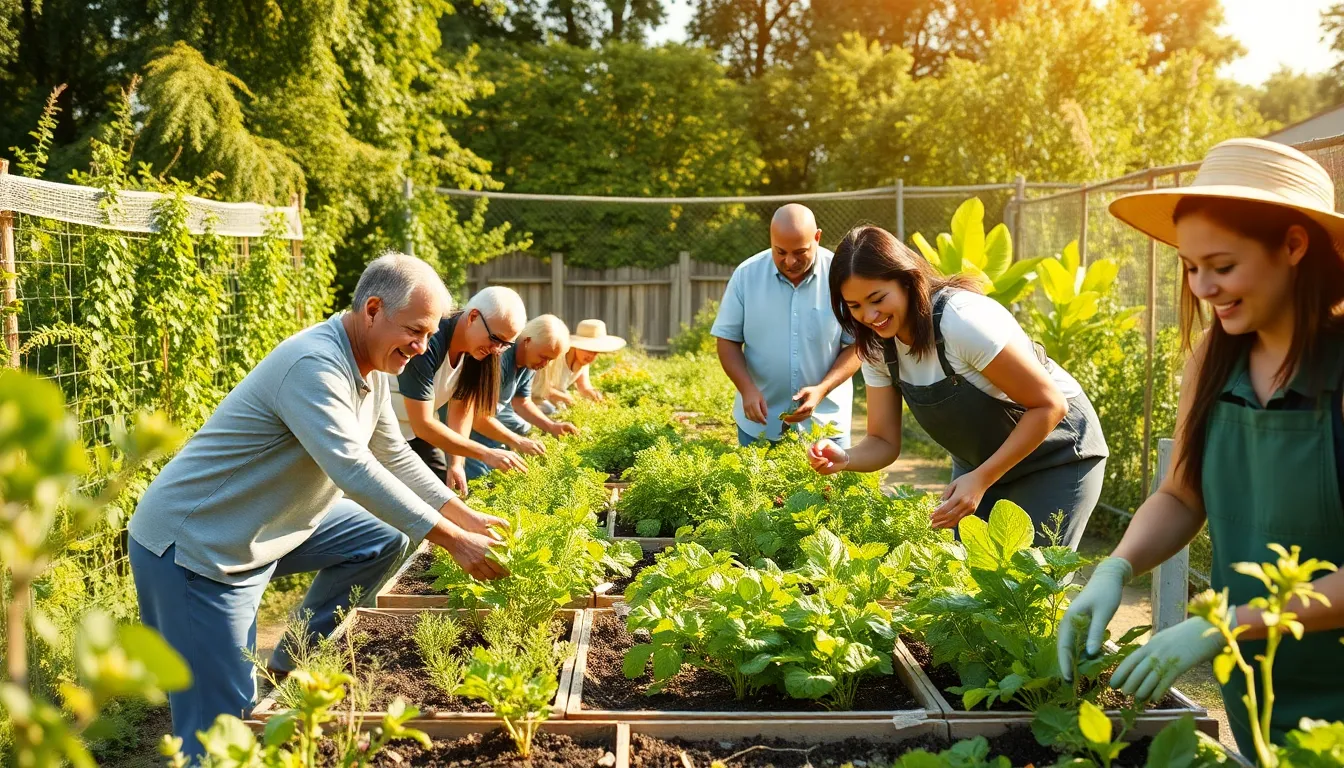In a world where plastic seems to multiply faster than rabbits, sustainable living isn’t just a trend—it’s a necessity. Imagine swapping out your single-use coffee cup for a stylish reusable one, all while saving the planet and looking fabulous. It’s like being a superhero, but instead of a cape, you’ve got a tote bag filled with eco-friendly goodies.
Table of Contents
ToggleWhat Is Sustainable Living?
Sustainable living involves making choices that minimize the negative impact on the environment. It emphasizes conserving resources, reducing waste, and fostering a balance between human activities and nature. This lifestyle choice prioritizes the health of the planet while promoting social responsibility and economic viability.
Adopting practices such as recycling, composting, and using renewable resources forms the foundation of sustainable living. Individuals can significantly lower their carbon footprint by opting for energy-efficient appliances and utilizing public transportation or cycling instead of driving. Smart consumption promotes buying local and sustainable products, reducing the carbon emissions linked to long-distance shipping.
Sustainable living also encompasses conscious food choices. Eating plant-based meals contributes to lowered greenhouse gas emissions and conserves water. Growing food in home gardens further enhances sustainability by reducing reliance on industrial agriculture.
Communities play an essential role in promoting sustainable living. Engaging in local initiatives, such as tree planting or clean-up events, fosters collaboration and raises awareness about environmental issues. Through education and outreach, communities can inspire individuals to adopt greener practices.
The benefits extend beyond environmental impact. Sustainable living enhances quality of life, encouraging healthier lifestyles and promoting connectedness within communities. With a collective effort, individuals can participate in a broader movement toward a sustainable future, ensuring that resources remain available for future generations.
Benefits Of Sustainable Living

Sustainable living offers numerous advantages that extend beyond individual choices. It positively influences the environment, economy, and personal well-being.
Environmental Impact
Adopting sustainable practices significantly reduces pollution and conserves natural resources. Utilization of renewable energy sources, such as solar or wind, cuts greenhouse gas emissions. Engaging in local recycling initiatives prevents valuable materials from ending in landfills. Furthermore, promoting biodiversity through sustainable agriculture helps maintain ecosystem balance. Opting for eco-friendly products reduces exposure to harmful chemicals. Sustainable living ultimately lessens individual ecological footprints, contributing to a healthier planet.
Economic Advantages
Choosing sustainable living can lead to substantial cost savings. Energy-efficient appliances decrease utility bills over time. Additionally, growing food in home gardens minimizes grocery expenses and promotes food security. Supporting local businesses strengthens the community’s economy while reducing transportation costs associated with imported goods. Sustainable practices often attract new funding opportunities and incentives from governments and organizations. Ultimately, prioritizing sustainability can create a more resilient economic framework.
Health Benefits
Sustainable living positively impacts physical and mental health. Incorporating more plant-based meals enhances nutrition and decreases the risk of chronic diseases. Additionally, spending time in green spaces, such as community gardens or parks, promotes mental well-being. Reducing reliance on harmful chemicals in home products lowers health risks linked to exposure. Engaging in sustainable practices fosters a sense of community, which enhances emotional support networks. Ultimately, adopting these habits leads to improved overall health and quality of life.
Practical Tips For Sustainable Living
Sustainable living involves making choices that protect the environment. Several practical steps can enhance this lifestyle.
Reducing Waste
Reducing waste starts with mindful consumption. Opt for bulk items rather than pre-packaged goods. Choose products with minimal or recyclable packaging to cut down waste significantly. Composting organic materials, such as fruit and vegetable scraps, promotes nutrient recycling and reduces landfill contributions. Utilize reusable bags, containers, and bottles to avoid single-use items. Participate in local recycling programs and educate others on their importance. Support businesses that prioritize sustainability by purchasing from eco-friendly brands.
Energy Conservation
Energy conservation plays a crucial role in sustainable living. Employ energy-efficient appliances to lower electricity usage dramatically. Switching to LED lighting decreases energy consumption while saving money long-term. Adjusting thermostat settings during different seasons also conserves energy. Utilizing natural light reduces reliance on artificial sources. Unplugging devices when not in use further minimizes energy waste. Consider investing in renewable energy sources, such as solar panels, to enhance sustainability within the home.
Sustainable Transportation
Sustainable transportation options reduce carbon footprints effectively. Walking or biking for short trips promotes health while minimizing emissions. Carpooling with others saves fuel and lowers overall traffic congestion. Public transportation systems, such as buses and trains, offer eco-friendly alternatives to individual car travel. When driving is necessary, maintaining vehicles ensures they remain fuel-efficient. Electric and hybrid vehicles significantly reduce reliance on fossil fuels, making them an environmentally friendly choice.
Challenges Of Sustainable Living
Sustainable living faces various challenges that hinder its widespread adoption. Understanding these obstacles helps individuals navigate their sustainable journey.
Common Misconceptions
Many believe that sustainable living requires extreme lifestyle changes. This thought often discourages people from even trying. Some think adopting eco-friendly habits costs significantly more, when in fact, items like reusable bags and containers offer savings. Others assume sustainable choices lack variety or appeal, overlooking the vast options available, from local organic produce to stylish upcycled products. By recognizing these misconceptions, individuals can better embrace sustainable practices without feeling overwhelmed.
Barriers To Adoption
Financial constraints often act as a barrier to sustainable living, especially when environmentally friendly products carry higher upfront costs. Limited access to resources, such as recycling programs, can deter individuals from making eco-conscious choices. Time restrictions also play a role, as busy schedules can hinder meal prep or participation in community initiatives. Additionally, a lack of awareness about sustainable practices can prevent people from taking actionable steps. By addressing these barriers, more individuals can transition to a sustainable lifestyle successfully.
Embracing sustainable living is more than just a trend; it’s a vital step toward securing a healthier planet. By making conscious choices and adopting eco-friendly habits, individuals can significantly reduce their environmental impact while enhancing their quality of life. Each small action contributes to a larger movement that fosters community connections and promotes a sustainable future.
As people become more aware of the benefits of sustainable practices, they can inspire others to join the cause. With determination and creativity, everyone can play a role in protecting the environment. Ultimately, sustainable living not only cultivates a better world for future generations but also enriches the lives of those who choose to engage in it.



